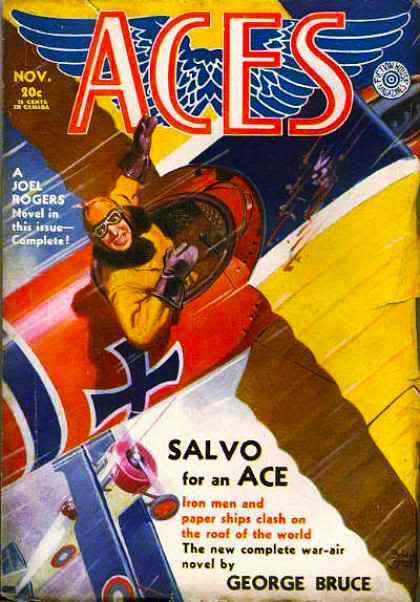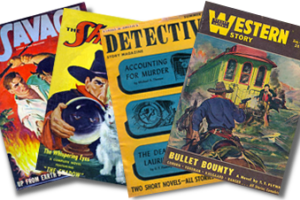I crammed as many twisting and turning Spads and Fokkers as I could into the space on my notebook paper.
You often see that sort of composition on the covers of in air war pulps — too many aircraft in too close of proximity.
Our latest example of Great Pulp Art takes a different approach.

The cover of the November 1931 number of Aces typifies Rudolph Belarski‘s covers for that pulp: a tight focus on people (a pilot or pilot and crewman) during a critical instant, with action in the background, all taking place in flight. Here it’s a German pilot in distress as the bullets from an American plane rip through his fragile fuselage.
Other air pulps, as mentioned before, often packed in the aircraft in an attempt to pack in the action. Others featured a portrait of specific aircraft in mid-flight. While others (think G-8 and His Battle Aces) tossed a bit of the fantastic into the mix.
Fiction House‘s Aces first landed on newsstands with its December 1928 number, just over 10 years after the end of World War I. It would continue running monthly through 1932, returning for six last issues spaced irregularly from spring 1937 through spring 1940 — for a total of 55 issues.


